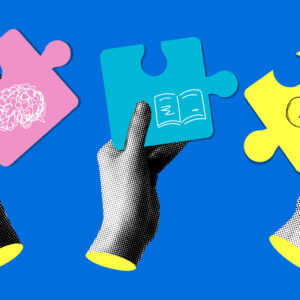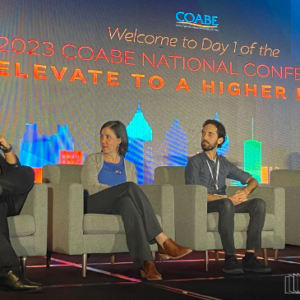By Alison Ascher Webber
Digital literacy and second language instruction should be integrated, and not taught separately. This message was conveyed by researchers and practitioners from Minneapolis to Belgium at the recent Literacy Education and Second Language Learning for Adults (LESLLA) Symposium in Portland, Oregon.
The three main reasons to integrate digital literacy and second language instruction:
Digital literacy is now an essential skill for participation in today’s digital world. Not teaching digital literacy along with language or other literacy instruction does our students a disservice. Nowadays, applying for a job or even filling in an online form to reserve a picnic table at a local park requires digital literacy skills.
Teaching digital literacy involves teaching vocabulary. The EdTech Center’s Jen Vanek presented research underscoring the importance of teaching key vocabulary for digital literacy. Learners do not quickly grasp and transfer the meaning of key vocabulary and its functional use from one digital program to another. For example, if they learn what bold and its symbol means in Microsoft word, learners don’t automatically then know how to use bold in another program such as G-mail. The implication is that vocabulary and their functions must be taught and practiced across multiple programs. Jen, together with a group of AmeriCorps service members, created a free Digital Homeroom with resources for vocabulary and other digital literacy instruction.
And most importantly:
Students learn by practicing. Computers and the Internet are natural contexts to practice language skills for real life tasks. Learners can practice English when finding information on their child’s school website, researching the going rate for apartments in their area, writing a resume, or using online learning programs. It’s important to use instructional activities that provide both an opportunity to practice digital skills and strengthen the problem solving process implicit in knowing what skill to use and when. Jen’s guide offers a framework and examples for supporting digital literacy by having students problem-solve in a technology rich environment. These examples can be scaffolded with some explicit vocabulary instruction to make them accessible for English language learners.
This focus on applied practice is critical as the biggest long-term learning gains for lower-levels learners are shown not by students who spend the most hours in any classroom, but in students who practice skills outside of class. EdTech Center partner Steve Reder’s work in Practice Engagement Theory for the Longitudinal Study of Adult Learning suggests that instruction should focus on giving students the competencies and confidence they need to successfully go out and practice skills in their real lives.
Computers and the Internet offer endless opportunity for language learners to practice, whether through online programs or completing real digital tasks. Meanwhile, higher language competencies open up more opportunities for students to practice their digital literacy skills. Language and digital literacy instruction are mutually reinforcing.
Alison Ascher Webber develops and leads innovative projects for the EdTech Center, including advising the new Employment Technology Fund and leading the Technology Testing for Adult Learning & Employment research project.





3 Comments.
All very informative information, Ra must-read for all Esl teachers.
A must-read for all teachers. The easy flow of information, and the good goals that can be set up after reading this is invaluable.
Thank you Rudy and great to hear! Sign up for our newsletter to get more tips.